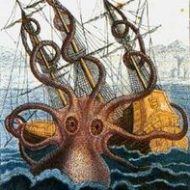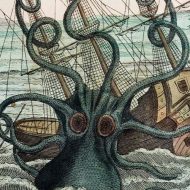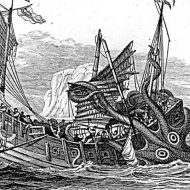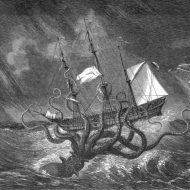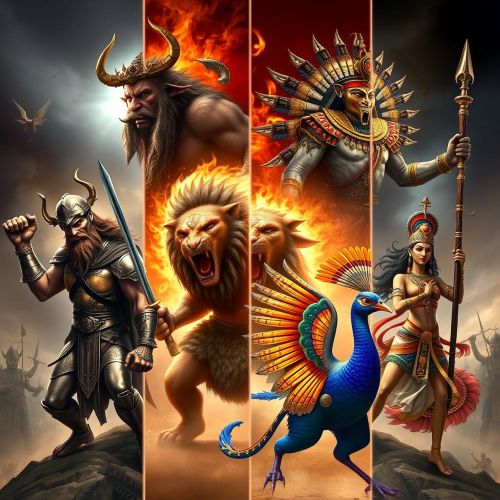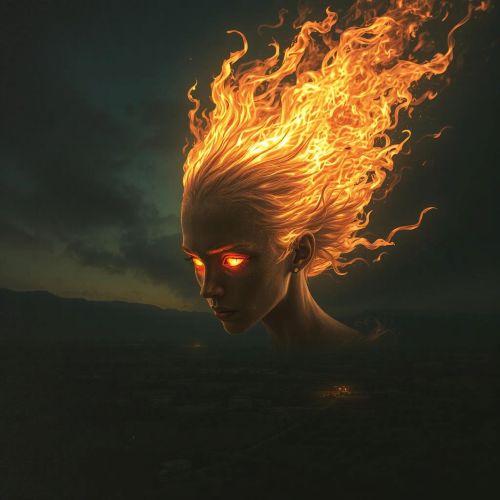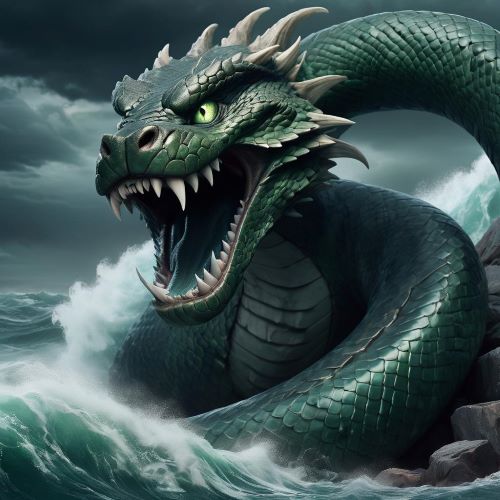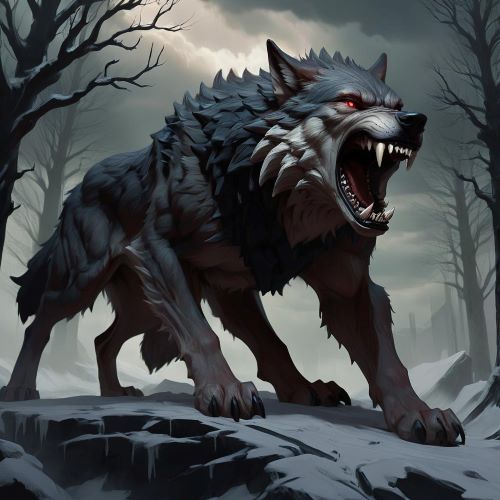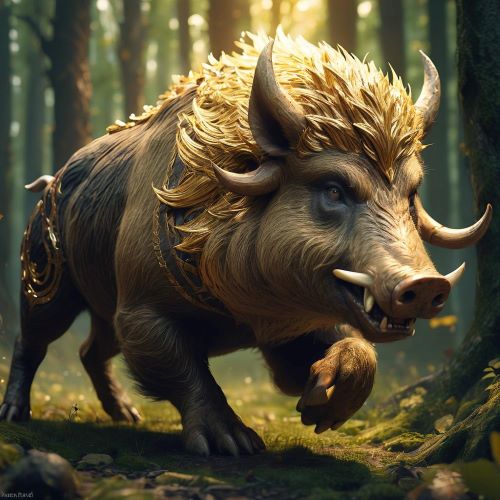Kraken : The Sea Monster
Listen
At a glance
| Description | |
|---|---|
| Origin | Norse Mythology |
| Classification | Animals |
| Family Members | N/A |
| Region | Scandinavia |
| Associated With | Ships, Man Eating |
Kraken
Introduction
The Kraken is regarded as the biggest monster in the world. According to Nordic folklore, it can be found in the seas from Norway all the way to Greenland. It is known to harass ships and has been reported that it would launch a powerful attack using its arms. If this strategy fails, it would then start swimming around the vessel, creating a massive maelstrom to drag it down.
The creature known as the Kraken has to taste human flesh in order to be considered worth its salt. According to legend, it could eat the entire crew of a ship at once. In spite of its fearsome reputation, it could also be beneficial to fishermen as it can swim alongside massive schools of fish that have been cascading down its back.
King Sverre of Norway wrote about the Kraken in 1180, and it started as a real creature based on the sightings of a massive squid. The sea was dangerous and challenging for ancient mariners, and encounters with monsters could give a mythological edge to stories told by sailors.
Physical Traits
During the 18th century, the kraken was depicted in various ways. Most of these were painted or drawn as large octopus-like creatures. In the earliest versions of folklore, the creatures featured appendages that looked like crabs. Some of the monsters were called whale-like, while others were described as having spines and armor.
Some stories claim that more than one kraken was spotted at the same time. It’s not clear if these creatures were all dwelling together or if they just encountered one another. Some waters are reportedly dangerous to sail in due to the presence of numerous kraken.
Other names
The word “kraken” comes from the Norwegian word “krake,” which literally means sea monster. A Norwegian dictionary states that the word krake, which literally means crooked tree, originated from Old Norse kraki. In the sense of an octopus or a sea monster, the word krake may have come from the same root.
Powers and Abilities
The Kraken is not considered to possess supernatural abilities. It can’t fly, control the weather, or shoot lightning. Its sheer size and aggressive nature make it an unsuitable creature to possess. It is also believed that when it dives, it creates dangerous whirlpools, and these could sink a ship.
Modern Day Influence
Despite its fictional nature, the story of the Kraken continues to live on in the present. It has been depicted in various forms of media, including films and literature.
Various films and books based on the Kraken have been released. Some of these include John Wyndham’s 1953 novel “The Kraken Wakes” and Marvel Comics’ “The Clash of the Titans,” which came out in 1981. The kraken made an appearance in two of the Pirates Of The Caribbean movies, namely Dead Man’s Chest and At World’s End, as the pet of Davy Jones, the film’s main antagonist.
Related Images
Frequently Asked Questions
What is the story behind the Kraken?
The Kraken is a legendary sea monster from Scandinavian folklore. It is often described as a massive, tentacled creature that dwells deep in the ocean and emerges to terrorize sailors and ships.
Where does the Kraken legend come from?
The Kraken legend originates from Norse mythology and ancient Scandinavian folklore. References to similar sea monsters like the Hafgufa and Lyngbakr can be found in Old Norse sagas.
How is the Kraken typically portrayed?
The Kraken is typically depicted as a colossal, octopus-like or squid-like creature with enormous tentacles. It is said to create massive whirlpools and storms when it surfaces, posing a grave threat to seafarers.
Is the Kraken considered a real creature or a cryptid?
The Kraken is typically classified as a cryptid, which means that its existence has not been scientifically proven. While some speculate that ancient mariners may have encountered giant squids or other large sea creatures, there is no concrete evidence to confirm the Kraken’s existence.



